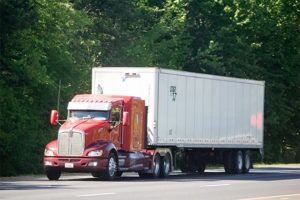
A survey of owners of commercial truck and bus fleets finds that newly adopted Hours of Service (HOS) rules for commercial drivers are not well understood and are expected mainly to pose problems with recordkeeping.
The survey, New Hours of Service Change Viewpoints: 2020 Transport Industry Study, was conducted from September 24 to October 1, 2020. The Federal Motor Carrier Administration’s (FMCSA’s) new HOS rules went into effect on September 29, 2020.
Hours of service refers to the maximum amount of time commercial truck drivers are permitted to be on duty, including time driving. The hours of service rules specify the number and length of rest periods that drivers must take each working shift. Driving time is regulated to guard against long-haul truckers being on the road while dangerously fatigued. Even with long-standing HOS regulations, fatigued driving remains a leading cause of truck accidents.
When a large truck is involved in an accident in North Carolina, it is more likely to be a fatal, multi-vehicle crash than when only passenger vehicles are involved. If a passenger vehicle collides with an 18-wheeler, the occupants of the smaller vehicle are more likely to be the ones to be seriously injured or have fatal injuries.
The truck accident lawyers at Hardison & Cochran in Raleigh, N.C., represent people injured in truck accidents. Our attorneys investigate the factors that contributed to the crash to seek compensation for clients. Truckers’ logs showing whether they complied with Hours of Service rules are high on the list of evidence to secure. Everyone has a stake in rules that help to make America’s trucking industry safer, especially those requiring adherence to Hours of Service regulations.
Trucking Companies Unsure About New Operating Rules
In a survey completed by about 500 motor carriers for the J. J. Keller Center for Market Insights, only 40% of respondents said they had a solid understanding of the FMCSA’s new Hours of Service rules and their impact. Almost 16% of respondents said they first heard about the changes when they took the survey.
One week prior to the rule’s effective date, close to half of the respondents were unsure of their plan to incorporate the rule changes or were waiting to see how other fleet operations changed and what impact it had.
The survey report says that motor carriers’ top challenges were not the new HOS rules, but were related to the electronic logging device (ELD) mandate, including:
- Recordkeeping requirements (ELDs, logs, or time records, including log falsification)
- Collecting supporting documents
- Managing ELD requirements (unassigned driving, yard moves, and personal conveyance).
The new rules require commercial drivers to use electronic logging devices if they are required to prepare hours-of-service records of duty status (RODS). They also require ELDs to be certified and registered with the FMCSA. There are several exceptions to the rule, including allowing drivers who operate under the short-haul exceptions to continue using timecards.
“The top challenge related to the new HOS rules concerned understanding which rule applied to which drivers and which vehicles,” the survey report says.
J. J. Keller & Associates, Inc., the parent company of the survey group, makes and markets Encompass, a suite of electronic logging device tools.
4 Major Changes in Truckers’ New HOS Rules
A six-page FMCSA fact sheet explains the new rules’ major changes with comparisons to the old rules and examples of compliance and violations. It says the new rules make four changes designed to offer drivers greater flexibility while maintaining the highest safety standards on the road. The four changes are:
- 30-Minute Break Requirement. The 30-minute break requirement can now be satisfied by an on-duty, not-driving break (as well as an off-duty break). The requirement for property-carrying drivers is applicable in situations where a driver has driven for a period of 8 hours without at least a 30-minute interruption.
- Short-Haul Exception. The short-haul exception maximum allowable workday has changed from 12 to 14 hours, and the distance the driver may operate has been extended from a 100 air-mile radius to a 150 air-mile radius. As noted above, drivers using the short-haul exception are permitted to record hours in a time record.
- Adverse Driving Conditions Exception. The adverse driving conditions exception extends the duty day by up to two hours when adverse driving conditions are encountered. This is in addition to the extra two hours of driving time already allowed.
- Sleeper Berth Provision. Drivers may split their 10-hour off-duty period in different ways (e.g., 7/3, 8/2, 7.5/2.5), provided one off-duty period (whether in or out of the sleeper berth) is at least 2 hours long and the other involves at least 7 consecutive hours spent in the sleeper berth. The periods must add up to 10 hours, and when used together, neither time period counts against the maximum 14-hour driving window.
About changes that affect use of electronic logging devices, the fact sheet says:
The minimum requirements in the Electronic Logging Device (ELD) final rule do not require ELDs to identify hours of service violations; however, some ELD providers have elected to offer this as an add-on feature. If an ELD provider offers this add-on feature but does not update their device to reflect the new hours of service rules, the ELD may inaccurately identify hours of service violations.
The J.J. Keller survey report says that a majority of respondents believe that, overall, the new HOS rules will benefit their operations and that the 30-minute break requirement will present the best benefit. This seems to hold true in trucking industry press reports.
“With all the uncertainty during the COVID-19 coronavirus pandemic, carriers and shippers appreciate the HOS changes,” Gail Rutkowski, executive director at the National Shippers Strategic Transportation Council, told Transport Dive. “Any added flexibility is a good thing.”
“Drivers are benefiting from the new rules without significant changes to how they operate,” Soona Lee, director of regulatory compliance with eRoad, another ELD company, told Heavy Duty Trucking.




